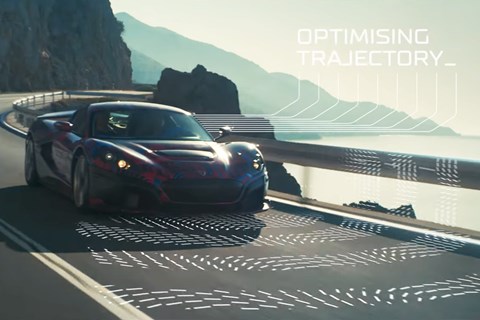► Follow up to Concept One
► Level 4 autonomous capability
► Just 20 are being built
Rimac is quickly becoming known as the go-to company for high-performance EV powertrains. And now, following heavy investment from Porsche and a partnership with Hyundai, the Croatian EV specialist has returned the spotlight to its own C_Two hypercar.
First unrevealed in 2018, the C_Two’s four electric motors can develop a total of 1887bhp and around 1700lb ft of torque. Insane numbers. The C_Two went on to become the Rimac Nevera in production.
Read our guide to the best electric cars and EVs
As for getting that power on the road, the C_Two uses a single-speed transmission to put power down from the front wheels, while each rear wheel has its own dedicated two-speed gearbox. The result? A theoretical top speed of 258mph, and a 0-62mph dash time of just 1.97 seconds. If you need it – and it’s unlikely you will – the Rimac can also go from standing to 100mph in just 4.3 seconds. With those figures, the Rimac C_Two may end up being one of the fastest cars – not just one of the fastest EVs – in the world. As the prototype testing video shows, torque vectoring is standard.
When is it coming out?
Rimac has updated us on the C_Two’s progress, revealing the EV has now undergone the last bit of testing. Efficiency, cooling and aero are all being looked at, to make sure the C_Two’s real-world performance correlates with that of Rimac’s simulations. The Croatian company says the results have been positive, and as a result of further developments overall aero efficiency has improved by a third.
The progress means the C_Two should make its 2021 release date; deliveries are expected for later this year.

How clever is the C_Two?
The Rimac has a eight cameras, a lidar, six radars, and 12 ultrasonic sensors stuffed into its 1950kg chassis. What’s that doing in a hypercar, you ask? Well, it’s making the Rimac C_Two ready for Level 4 autonomy – not something you’d usually expect in a supercar.
Read our guide to the different levels of autonomy, here
As for how much it’ll cost and when it’ll be here, we don’t know yet – but we’ll update this article when we find out.